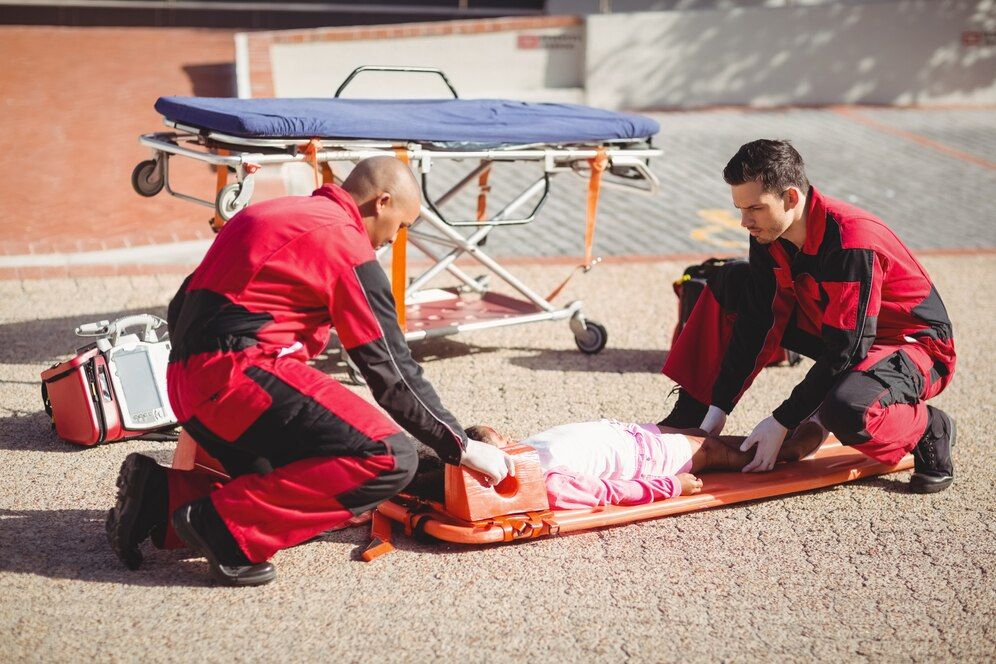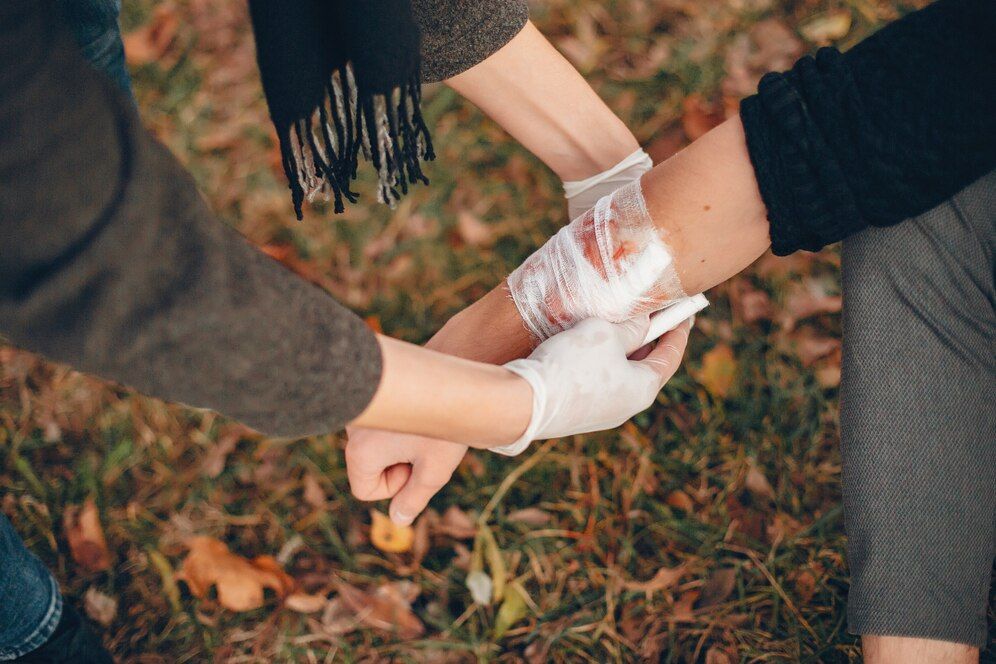
GET A QUOTE
What are the 7 Steps of Basic First Aid?
Accidents happen when we least expect them, and knowing basic first aid can make all the difference in an emergency situation. First aid is the initial assistance given to someone who is injured or suddenly taken ill. This immediate care can help stabilize the individual and, in many cases, save lives before professional medical help arrives. In this article, we'll walk you through the 7 steps of basic first aid, ensuring you're prepared to act quickly and effectively when it matters most.
Step 1: Assess the Situation
The first step in providing basic first aid is to assess the situation. Before rushing in to help, take a moment to ensure the area is safe for both you and the injured person. Check for any potential hazards such as traffic, fire, or unstable structures that could pose additional risks. Once you've determined it's safe, approach the injured person calmly and cautiously.
Step 2: Call for Help
After assessing the situation, the next critical step is to call for help. Dial emergency services immediately. Provide them with clear and concise information about the location, the nature of the injury or illness, and any other relevant details. While waiting for professional help to arrive, stay with the injured person and offer reassurance.
Step 3: Check for Responsiveness
Once you’ve called for help, check if the injured person is responsive. Gently tap their shoulder and ask if they can hear you. If there is no response, it’s essential to determine whether they are breathing and have a pulse. If they are unresponsive but breathing, place them in the recovery position to keep their airway clear. If they are not breathing or you cannot detect a pulse, be prepared to perform CPR.
Step 4: Perform CPR (if necessary)
Cardiopulmonary resuscitation (CPR) is a life-saving technique that can help maintain blood flow and oxygen to the brain and other vital organs. If the injured person is unresponsive and not breathing, start CPR immediately. Begin with 30 chest compressions followed by two rescue breaths. Continue this cycle until professional medical help arrives or the person starts to breathe normally.
Step 5: Control Bleeding
If the injured person is bleeding, it's crucial to control the bleeding as quickly as possible. Apply direct pressure to the wound using a clean cloth or bandage. If the bleeding is severe and doesn't stop with direct pressure, you may need to use a tourniquet. Place the tourniquet above the wound, tighten it until the bleeding stops, and note the time it was applied. Remember, controlling bleeding is vital to prevent shock and further complications.
Step 6: Treat for Shock
Shock is a life-threatening condition that can occur after a severe injury or trauma. Signs of shock include pale or clammy skin, rapid breathing, and a weak pulse. To treat for shock, have the injured person lie down and elevate their legs, if possible. Keep them warm by covering them with a blanket or clothing. Avoid giving them food or drink, and continue to monitor their condition until emergency services arrive.
Step 7: Provide Basic Wound Care
Once immediate life-threatening conditions are addressed, focus on providing basic wound care. Clean any minor cuts or abrasions with water to remove dirt and debris. Apply an antiseptic if available and cover the wound with a sterile bandage. For more severe wounds, keep them as clean as possible and avoid removing any objects that may be embedded in the wound. Instead, stabilize the object and wait for professional help.
Additional Tips for Effective First Aid
While the 7 steps of basic first aid provide a comprehensive guide to handling emergencies, there are a few additional tips that can enhance your effectiveness as a first responder:
Stay Calm and Composed
In any emergency, staying calm and composed helps you think clearly and act efficiently. Panic can lead to mistakes, so take deep breaths and focus on the task at hand.
Communicate Clearly
Whether you're talking to emergency services or the injured person, clear communication is essential. Provide accurate information and listen carefully to any instructions given by medical professionals.
Use Personal Protective Equipment (PPE)
If available, use PPE such as gloves and masks to protect yourself and the injured person from infections and other hazards.
Learn Basic First Aid Skills
Consider taking a certified first aid course. Practical training can give you the confidence and skills needed to handle various emergencies effectively.
Why Basic First Aid Knowledge is Essential
Understanding the 7 steps of basic first aid can have a profound impact on your ability to respond in an emergency. Here's why having this knowledge is so crucial:
Saves Lives
Immediate first aid can be the difference between life and death in critical situations. Effective CPR and bleeding control can prevent fatalities.
Prevents Further Injury
Proper first aid helps stabilize the injured person, preventing their condition from worsening before professional help arrives.
Reduces Recovery Time
Prompt and correct first aid can minimize the severity of the injury and speed up the recovery process.
Empowers You
Knowing basic first aid instills confidence and empowers you to act decisively, rather than feeling helpless in an emergency.
Conclusion
Accidents and emergencies can happen at any time, and being prepared with the knowledge of the 7 steps of basic first aid can make a significant difference. From assessing the situation and calling for help to performing CPR and controlling bleeding, each step is vital in providing immediate care and stabilizing the injured person. By staying calm, communicating clearly, and continually improving your first aid skills, you can be a valuable first responder in any emergency.
For those seeking to enhance their first aid knowledge and skills, RisenMedical offers a range of high-quality emergency first aid supplies. Whether you're an individual looking to learn the basics or an organization aiming to equip your team with life-saving skills, RisenMedical has the expertise and resources to help. Investing in proper first aid training with Risen Medical not only empowers you to act decisively in emergencies but also ensures you have the best tools and knowledge to save lives and make a lasting impact. Remember, the actions you take in those crucial first moments can save lives and make a lasting impact. Choose Risen Medical to be prepared for any emergency.


